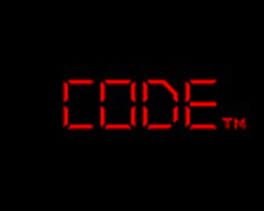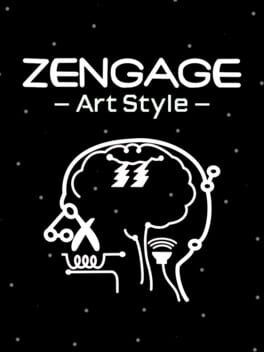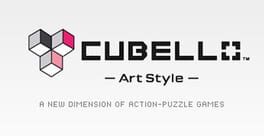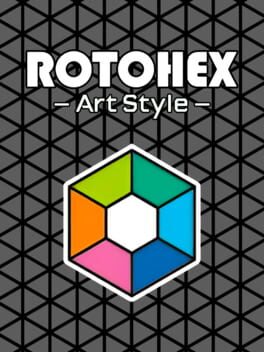

The Art Style series brings you unique, simple-to-play games with striking visuals and immersive sound.
Also in series
Reviews View More
Adding up to ten may sound like s simple thing to do, but when it involves flipping numbers around on a grid then it can get tough. This is where Art Style: CODE comes in and mixes simple addition and puzzle gameplay.
You hold the DSi sideways and the numbers glide from the left screen onto the touch screen – unfortunately there’s no left-handed option so I had to place the game on a table to play comfortably – where you have to move them around to make rows or columns that add up to 10. It’s not quite that simple, though: the numbers resemble the ones seen on digital clocks and swapping them round (done by a simple stroke with the stylus) with the next number flips them around. Swapped horizontally, a 1 will become a useless line, a 2 will transform into a 5 and a 3 will turn into a pointless E.
Unlike the majority of puzzle games, the numbers won’t fade away automatically. You have to tap the numbers on both ends of the set that makes 10 and also have to spot any possibly combo chains for yourself, while also rushing to prevent the numbers from filling both screens (and therefore ending the game). If you’re lucky then a red unflipable number will drift onto the screen. Get rid of this (by including it in an addition) and you’ll get rid of all matching numbers (ones flipped out of shape won’t be removed). CODE includes four modes: Challenge, Puzzle, Endless and Vs.
Challenge Mode lets you select how many different numbers you want (from 1-2 to 1-9 plus 0) and gives you a set number of numbers to remove before the screen fills up. A best time for clearing each level is recorded. ‘Endless Mode’ starts you off with the numbers 1 & 2 and slowly adds more numbers. As the name suggests, the only way to finish is by getting Game Over.
Luckily, the Vs. Mode includes a Download Play option, meaning that you can play with anyone (locally) with a DS – it can even be an original or Lite unit. Clearing 3 or more numbers will send them over to your opponents screen and clearing a row of 6 will randomly shuffle your opponent’s numbers. It’s great fun when it gets competitive and (with the right opponent) you’ll keep playing “one more rematch”.
‘Puzzle Mode’ is a separate thing altogether, although most aspects of gameplay still remain. You are given a grid of numbers and you have to remove them all in sets that add up to 10 – but be careful or else you’ll end up with remaining numbers that can’t be added up to 10, so you’ll be required to tap the retry button and start again. There are 27 puzzles (3 for each group of numbers) and they get extremely tough.
If you like doing daily number puzzles (like Sudoku) then this will provide a nice alternative for a while, and on top of keeping a record of the least amount of moves used and best time there is also a recommended par (set number of moves) to try and beat the puzzle in, providing an extra incentive to come back and get a better score.
If you like maths-based puzzles then you’ll certainly love CODE. The main mode is frantic and the puzzle mode requires a lot of thought. It’s a game that is best played for a short time each day and it certainly worth 500 Nintendo points.
You hold the DSi sideways and the numbers glide from the left screen onto the touch screen – unfortunately there’s no left-handed option so I had to place the game on a table to play comfortably – where you have to move them around to make rows or columns that add up to 10. It’s not quite that simple, though: the numbers resemble the ones seen on digital clocks and swapping them round (done by a simple stroke with the stylus) with the next number flips them around. Swapped horizontally, a 1 will become a useless line, a 2 will transform into a 5 and a 3 will turn into a pointless E.
Unlike the majority of puzzle games, the numbers won’t fade away automatically. You have to tap the numbers on both ends of the set that makes 10 and also have to spot any possibly combo chains for yourself, while also rushing to prevent the numbers from filling both screens (and therefore ending the game). If you’re lucky then a red unflipable number will drift onto the screen. Get rid of this (by including it in an addition) and you’ll get rid of all matching numbers (ones flipped out of shape won’t be removed). CODE includes four modes: Challenge, Puzzle, Endless and Vs.
Challenge Mode lets you select how many different numbers you want (from 1-2 to 1-9 plus 0) and gives you a set number of numbers to remove before the screen fills up. A best time for clearing each level is recorded. ‘Endless Mode’ starts you off with the numbers 1 & 2 and slowly adds more numbers. As the name suggests, the only way to finish is by getting Game Over.
Luckily, the Vs. Mode includes a Download Play option, meaning that you can play with anyone (locally) with a DS – it can even be an original or Lite unit. Clearing 3 or more numbers will send them over to your opponents screen and clearing a row of 6 will randomly shuffle your opponent’s numbers. It’s great fun when it gets competitive and (with the right opponent) you’ll keep playing “one more rematch”.
‘Puzzle Mode’ is a separate thing altogether, although most aspects of gameplay still remain. You are given a grid of numbers and you have to remove them all in sets that add up to 10 – but be careful or else you’ll end up with remaining numbers that can’t be added up to 10, so you’ll be required to tap the retry button and start again. There are 27 puzzles (3 for each group of numbers) and they get extremely tough.
If you like doing daily number puzzles (like Sudoku) then this will provide a nice alternative for a while, and on top of keeping a record of the least amount of moves used and best time there is also a recommended par (set number of moves) to try and beat the puzzle in, providing an extra incentive to come back and get a better score.
If you like maths-based puzzles then you’ll certainly love CODE. The main mode is frantic and the puzzle mode requires a lot of thought. It’s a game that is best played for a short time each day and it certainly worth 500 Nintendo points.





